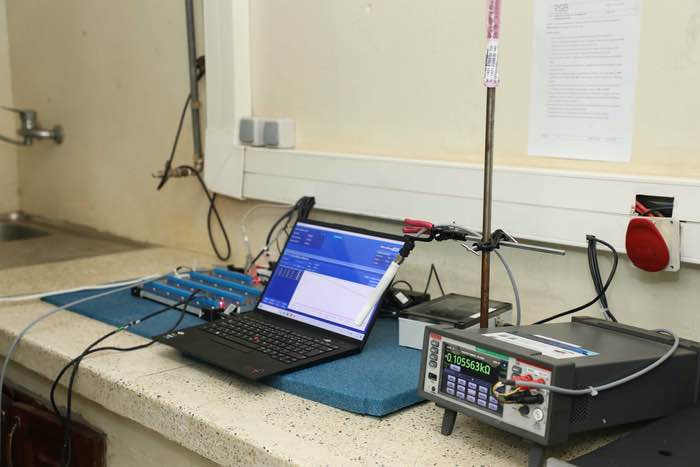
Rwanda will no longer outsource calibration services for meteorology, hydrology and air quality monitoring equipment, as these services will from now on be delivered by calibration laboratories launched on 14th September 2023.
The establishment of Calibration Laboratories for Meteorological, Hydrological, and Air Quality Monitoring Instruments in Rwanda will offer several significant benefits. For example, meteorology sensors were used to be sent in Nairobi, Kenya to be calibrated.
“Sending meteorology sensors as well as other sensors outside Rwanda was not only posing a risk of damage to those sensors, it was also costing unnecessary additional cost to Rwanda, as apart from calibration fees, there was a cost for transportation and insurance to each sensor sent outside Rwanda to be calibrated” said Aimable Gahigi, Director General, Rwanda Meteorology Agency.
Calibration ensures that instruments used for weather, hydrology, and air quality measurements provide accurate and reliable data, which is critical for various sectors, including agriculture, public health, disaster management, and environmental protection.
The Calibration laboratory will support Rwanda’s commitment to building a resilient and environmentally sustainable future by enhancing data accuracy, improving decision-making in various sectors, promoting sustainable development, and contributing to global efforts to address climate change and environmental challenges.
“As we stand at the threshold of a future charged with environmental challenges, it is crucial that we equip the country with the tools and knowledge necessary to anticipate them effectively. This calibration center represents a giant leap forward in our ability to monitor, predict, and respond to meteorological, hydrological, and air quality phenomena” noted Minister of State for Environment, Dr. Claudine Uwera.
“In an era where climate change poses an existential threat to our planet, this calibration center is our commitment to understanding and mitigating its effects. By ensuring the accuracy of our monitoring instruments, we pave the way for more precise climate models, which are essential for informed climate policymaking”, she added.
If climate projections do not adequately represent local climate conditions, potential predicted impacts could be biased, and proposed adaptation strategies would be inappropriate, which can increase losses and damages without counting the time and resources wasted in implementing ineffective measures.
By strengthening the capacity of Rwanda Standard Board for calibration of meteorological, hydrological, and air quality monitoring instruments in line with recognized standards, “there will be improvement of data quality to inform national adaptation planning in Rwanda”
The laboratories – hosted by Rwanda Standards Board – were equipped by the Rwanda Environment Management Authority (REMA) through a project called “Building the capacity of Rwanda’s government to advance the National Adaptation Planning (NAP) process” being implemented by REMA with support from the Global Environment Facility (GEF) through the United Nations Environment Program (UNEP).
The objective of the project is to increase the capacity of the governmental authorities and local communities in Rwanda to plan, fund, implement, and monitor climate change adaptation solutions in the medium and long term, thus advancing the NAP process.
“Meteorology, hydrology, and air quality are inextricably linked to the health and well-being of our planet and its inhabitants. They play pivotal roles in agriculture, industry, public health, disaster management, and policymaking. Accurate data and precise measurements are the bedrock of informed decision-making, and this calibration center will be the cornerstone for such measurements” said Faustin Munyazikwiye, Deputy Director General, REMA.
The laboratories feature cutting-edge instruments, advanced technology, and a team of highly skilled scientists and technicians. It will enable Rwanda to calibrate, validate, and maintain a vast network of weather stations, hydrological sensors, and air quality monitoring devices across the nation.
The data collected will not only enhance “our understanding of weather patterns, river flows, and air quality but also improve our capacity to forecast extreme events and respond swiftly to natural disasters”. (End)
